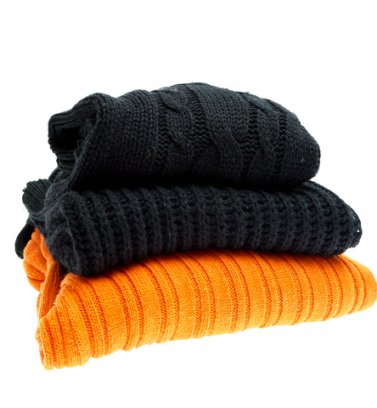
Smart textiles to grow to US$24 billion by 20205
As part of the study, researchers produced four smart knitted fabrics from a purpose-made electrochromic composite yarn.

28th September 2016
Innovation in Textiles
|
Edinburgh
George Stylios, a Senior Research Professor at the Heriot-Watt University, together with a research student Meixuan Chen, have conducted a study examining the participants’ emotional reactions to a variety of patterns in order to determine whether they can be manipulated to change our state of mind.
As part of the study, researchers designed and produced four smart knitted fabrics from a purpose-made electrochromic composite yarn – psychotextiles – that could toggle between two kinds of patterns on a graduating scale.
According to the results, different patterns produced activity in different parts of participants' brains that are linked to certain emotional responses, which means that by shifting between patterns, the participant may switch from one emotion to the other and back again.
“By using a smart fabric, it means someone could choose a pattern to achieve a particular emotion – clothes that lift your mood or calm you down, for example; or wallpaper that can be manipulated to create a party atmosphere. It could be set to respond to the weather, to the time of day or year or whatever,” explained Prof Stylios.
“It could be a kind of visual medicine that becomes an alternative to the likes of antidepressants. Equally it might transform product manufacturing, engineering and the teaching of art and design. In future we might talk about psychoart, psychointeriors, psychomaterials and psychoarchitecture, to name only a few.”
“While most of us feel pain if we’re pricked by a needle, or taste sourness sucking a lemon, scientists understand less about how we’re affected by what we see. This is because seeing is a much more complicated activity. It involves shape, dimension and colour in a three-dimensional context with multiple object associations that are changing over time,” Prof Stylios explained.
“Our insights into colours and shapes come mainly from neuroscientists looking for ways to treat people with psychiatric problems such as depression and schizophrenia. They have tended to be limited and not practical for using in everyday life – which is what we wanted to achieve.”
The study involved two stages. In the first stage, George Stylios and Meixuan Chen tested ten pairs of patterns on 20 participants. Each participant was shown the images on a computer screen. Researchers investigated their emotional responses by measuring their brain and heart activity respectively using EEG and ECG monitors, as well as asking them how they felt about each pattern.
After analysing the results, researchers discerned two trends. The study participants took more pleasure from repeating patterns than non-repeating ones, and were more excited by intense patterns than weak ones.
“We didn’t show the participants different categories of patterns at this stage, but rather a wide selection. We deliberately made them black and white, since using colours would have risked contaminating the results.”
For the second stage of the study, researchers designed and produced four smart knitted fabrics on campus from a purpose-made electrochromic composite yarn. Two of the fabrics toggled between a repeating and non-repeating pattern, while the other two toggled between weak and intense patterns. These were tested on 20 more people in a similar way to the first stage, confirming the previous findings.
The next step would be to start combining patterns with different colours and shapes. Researchers might look at more chaotic patterns, patterns with lettering, mixtures of angles and curves, patterns with three-dimensional effects and so on. After that, researchers might look more closely at smells and sounds and start mixing these with the visual elements. “If we are to make the most of the reactions that we have in common, the future starts here,” Prof Stylios concluded.

Business intelligence for the fibre, textiles and apparel industries: technologies, innovations, markets, investments, trade policy, sourcing, strategy...
Find out more